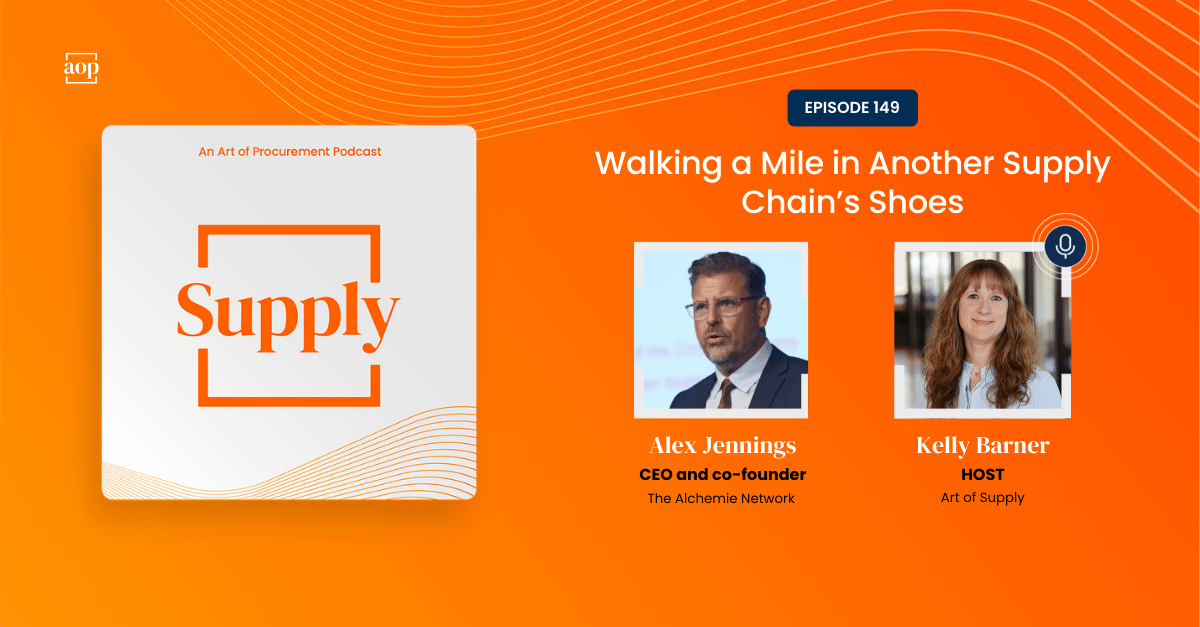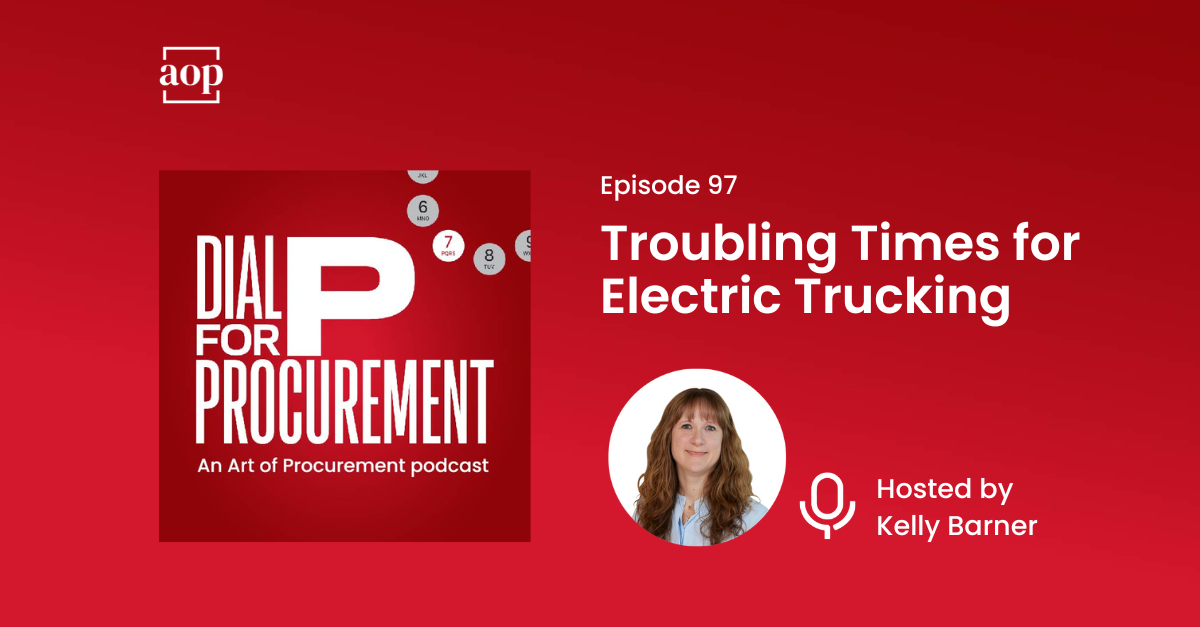
“We can’t say we inspire and develop the builders of tomorrow if we’re ruining the planet.” – Tim Guy Brooks, Head of Environmental Responsibility at LEGO
One of the most common concerns of modern supply chains – beyond risk and disruption of course – is sustainability.
ESG initiatives are a high C-suite priority, not to mention the concern of multiple regulatory bodies. Because a significant portion of most companies’ carbon emissions is associated with their supply chain, the battle is on, not to just offset, but to actually reduce environmental impact.
We can all agree that sustainability is right and good – but that doesn’t mean it will be easy.
Sustainable innovation and production require commitment and a willingness to drive change from within, but in some cases not even that is enough.
In this week’s episode of Dial P for Procurement, I trace LEGO’s push towards plant-based materials as a way of studying the very real challenges of finding a way even when there is already a will.
Making a Commitment
In 2012, LEGO committed to making sustainable bricks by 2030, which means they have been at it for 11 years now. The company has invested $150 Million to hire scientists and fund research and development, and yet just 2 percent of its products are currently made from plant-based plastic.
LEGO’s journey towards sustainability recently made news when they announced that they would scrap plans to make bricks out of recycled plastic bottles (PET) because of the net carbon impact. They found that making bricks from the recycled material would require investing in new equipment and involve more steps, which would ultimately lead to more planet-heating pollution than the status quo. The extra steps involved in production would use more energy and manufacturing facilities would require retooling. Fortunately, LEGO took the time to do a comprehensive analysis of the new process.
PET, which LEGO started evaluating just over two years ago, is just one of hundreds of sustainable materials they have tested. They tried making bricks from corn, but they were too soft. Wheat-based bricks didn’t look right.
Bricks made from other materials proved too hard to pull apart or lost their grip. LEGO refers to this as “clutch power” or the ability of bricks to stick together.
If it had worked, a one-liter PET bottle could have produced around 10 of classic 2×4-stud bricks.
This recent news shouldn’t be taken to mean that LEGO hasn’t had any success. They have been using a bioplastic made from sugar cane to produce small, soft pieces like trees, branches, leaves, and minifigure accessories. The bioplastic, known as bio-PE, isn’t appropriate for making harder, stronger elements such as its bricks and it is subject to “creep,” the company’s word for when bricks lose their grip and collapse.
Most LEGO pieces are made from acrylonitrile butadiene styrene plastic (or ABS) and have been since 1963. Standard plastic production is heavily reliant on petrochemicals, where fossil fuel feedstocks account for 99 percent of the raw material base for plastics.
The conflict between LEGO’s sustainability mission and use of fossil fuels for production is palpable. ABS doesn’t biodegrade, nor is it easily recycled.
There have to be compelling reasons for the company to continue using this plastic in their products. ABS has a strong resistance to corrosive chemicals and/or physical impacts. It is easy to machine and has a low melting temperature making it ideal for injection molding manufacturing. ABS is also relatively inexpensive, around $1.50 per pound.
Supply Chain Sustainability at Scale
One of LEGO’s challenges is that they need large food-grade volumes of bioplastic.
The company has figured out they can’t do it alone:
- They share their findings with other companies and have joined the Bioplastic Feedstock Alliance (BFA) alliance, which includes Nestle, Procter & Gamble, and McDonald’s.
- They have tried to build demand (and therefore incentivize supply) by joining with companies like IKEA, Unilever, Nike, and Danone SA who also want to move to sustainable materials.
- They have a partnership with pharma company Novo Norodisk to move away from fossil fuel derived plastics
But not all of their learnings have been transferable. Coca-Cola has sold bottles that use 30 percent plant-based packaging since 2009, but because LEGO couldn’t find a way to source the remaining 70 percent, they decided not to go down that path.
LEGO isn’t just looking at the composition of their bricks in their push towards sustainability.
90 percent of the company’s emissions come from the supply chain, including raw materials and distribution; the remainder relate to energy use at factories, offices, and stores.
LEGO is spending $1 Billion to build a new factory in Virginia, their 7th worldwide, to shorten the distance between production and consumption. The 1.7-million-square-foot factory is supposed to start brick production in the second half of 2025. It will be carbon neutral and will have a solar park that will be used to power the facility.
LEGO is looking at product composition, transportation distances, and facility efficiency – so it only makes sense they would look at packaging too. They are trying to switch how they package their minifigures, which are currently sold in crinkly plastic bags.
Customers have been very vocal about not liking the alternative of a cardboard box. Diehard collectors have mastered the ability to figure out what’s in these “blind bags.” Boxes make this impossible, and ruin the customer experience. Only about 7 percent of LEGO packaging isn’t made of sustainable materials, and that portion includes the plastic bags for collectible minifigures.
LEGO turned 90 in 2022 – if they stay on track, their bricks will be sustainable just in time for their 100th anniversary. I’m sure that is part of their urgency.
All of their actions and investments indicate a genuine desire to be more sustainable, but wanting is not the same as being. It is a fair reminder that the journey towards sustainability is likely to be more challenging than many companies and executive teams expect.





